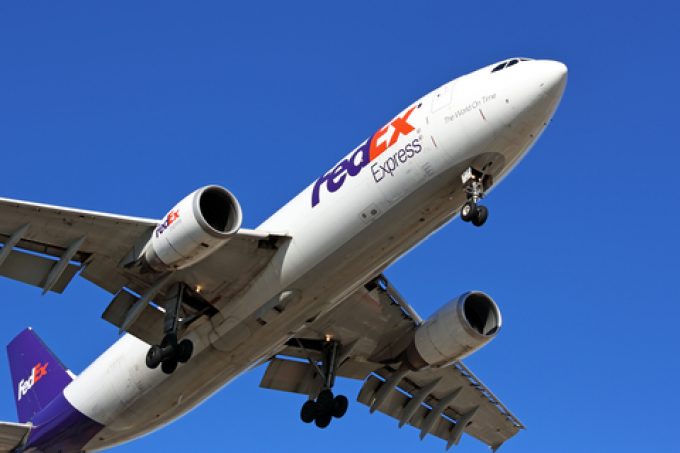UPS drama – a Premium back and forth on key bits and pieces
Network power
TFII: SOLID AS USUALMAERSK: WEAKENINGF: FALLING OFF A CLIFFAAPL: 'BOTTLENECK IN MAINLAND CHINA'AAPL: CHINA TRENDSDHL: GROWTH CAPEXR: ANOTHER SOLID DELIVERYMFT: HERE COMES THE FALLDSV: LOOK AT SCHENKER PERFORMANCEUPS: A WAVE OF DOWNGRADES DSV: BARGAIN BINKNX: EARNINGS OUTODFL: RISING AND FALLING AND THEN RISING
TFII: SOLID AS USUALMAERSK: WEAKENINGF: FALLING OFF A CLIFFAAPL: 'BOTTLENECK IN MAINLAND CHINA'AAPL: CHINA TRENDSDHL: GROWTH CAPEXR: ANOTHER SOLID DELIVERYMFT: HERE COMES THE FALLDSV: LOOK AT SCHENKER PERFORMANCEUPS: A WAVE OF DOWNGRADES DSV: BARGAIN BINKNX: EARNINGS OUTODFL: RISING AND FALLING AND THEN RISING

FedEx chief Raj Subramaniam isn’t done with cuts: the latest casualty of his drive to save some $4.7bn, and shore up margins, is the same-day delivery service in US metropolitan areas, dubbed at launch “the fastest local shipping option”.
This comes on the heels of plans to trim the senior management staff count by at least 10%.
FedEx’s SameDay City service, across some 1,800 cities, will stop on 31 March and “all positions that support it are going to be eliminated”, the company announced.
This is a service to move critical supplies for firms in the healthcare, automotive and other sectors, but the slowdown in past months has stifled customer appetite for high-speed, high-cost services. In an earnings call in December, FedEx chief customer officer Brie Carere noted that shippers had become more interested in deferred services and management was expecting further pressure on per-package revenue.
The integrator is also scaling back its Sunday home deliveries, again launched with great fanfare as services that made FedEx stand out.
Meanwhile, FedEx continues its cutbacks on the personnel side. Last week, an internal memo from Mr Subramaniam surfaced, in which he told employees that at least 10% of positions at global officer or director level would be cut, with a view to consolidating some functions and responsibilities.
He described the move as “critical to ensure that FedEx would remain competitive”.
However, the memo did not specify which positions and departments would be affected. Some observers have criticised this lack of detail, but the decision to thin executive ranks resonates with investors: FedEx stock rose 4.3% in the wake of the announcement, and was up another 6.3% the following day. Since last June, FedEx has axed over 12,000 jobs.
While cutting headcount and premium services, management is also trying to boost its deferred business. On 1 February, the integrator announced an agreement with Shippo, a software company that allows e-commerce players to integrate shipping with multiple carriers through its API and web application.
Shippo, reportedly, has tens of thousands of customers, mostly small and mid-sized firms, and under the agreement they have access to discounts usually only available to large shippers. The deal applies to FedEx’s Ground Economy and International Connect Plus services.
“FedEx is targeting merchants that need low-cost shipping and are not overly concerned with transit times,” said Dean Maciuba, managing partner of Crossroads Parcel Consulting. He added that the move made sense, as it allowed FedEx to target this client list without deploying its own sales staff.
Like the scaling back of premium services, the chase for low-margin deferred business marks a u-turn for FedEx. In its pursuit of higher-margin traffic, it had successfully discouraged use of its lower-end offerings through aggressive pricing, said Mr Maciuba, adding: “FedEx lost over 35% of its deferred ground business last year.”
Now, with demand significantly down, FedEx is straining to attract volume to beef-up its utilisation, a stark reflection of the drastic turn of the market since last summer.
Struggling with elevated costs, shippers are likely to avail themselves of the discounts the FedEx-Shippo deal offers. How much money can be saved depends on route and service used. According to Shippo, on a move from Los Angeles to New York, the discount would be 27.5%, and there are no surcharges on fuel and residential deliveries.
Last year, FedEx and UPS announced general rate increases of 6.9% for 2023, their largest annual rate increases on record.
Mr Maciuba said he believed UPS had navigated the parcel market more adroitly than FedEx. Despite a 2.7% decline in revenue in the fourth quarter, and a 17.9% drop in operating profit, it managed to post gains in revenue and operating profit for the full year, of 3.1% and 5.4%, respectively.
However, observers and customers wonder how UPS will navigate labour contract negotiations in the coming months. The contract with the 340,000 employees represented by the Teamsters union expires on 31 July, and negotiations are set to get under way in April.
Pointing to the record profits UPS has raked in over past years, the union has taken a tough stance. Among other things, it seeks a raise of wages for part-time employees and the elimination of a controversial two-tiered salary system, introduced in 2018, that allowed the creation of a new category of drivers who were paid less and could also work as package loaders, and on weekends.
In 1997, a strike by the Teamsters shut the UPS ground network for 15 days, which prompted many shippers to change their delivery options for good.
A repeat of that scenario would give FedEx a dramatic boost, but it would be catastrophic for shippers. Observers have pointed out there isn’t enough capacity in the market to compensate for a shutdown at UPS.
Comment on this article